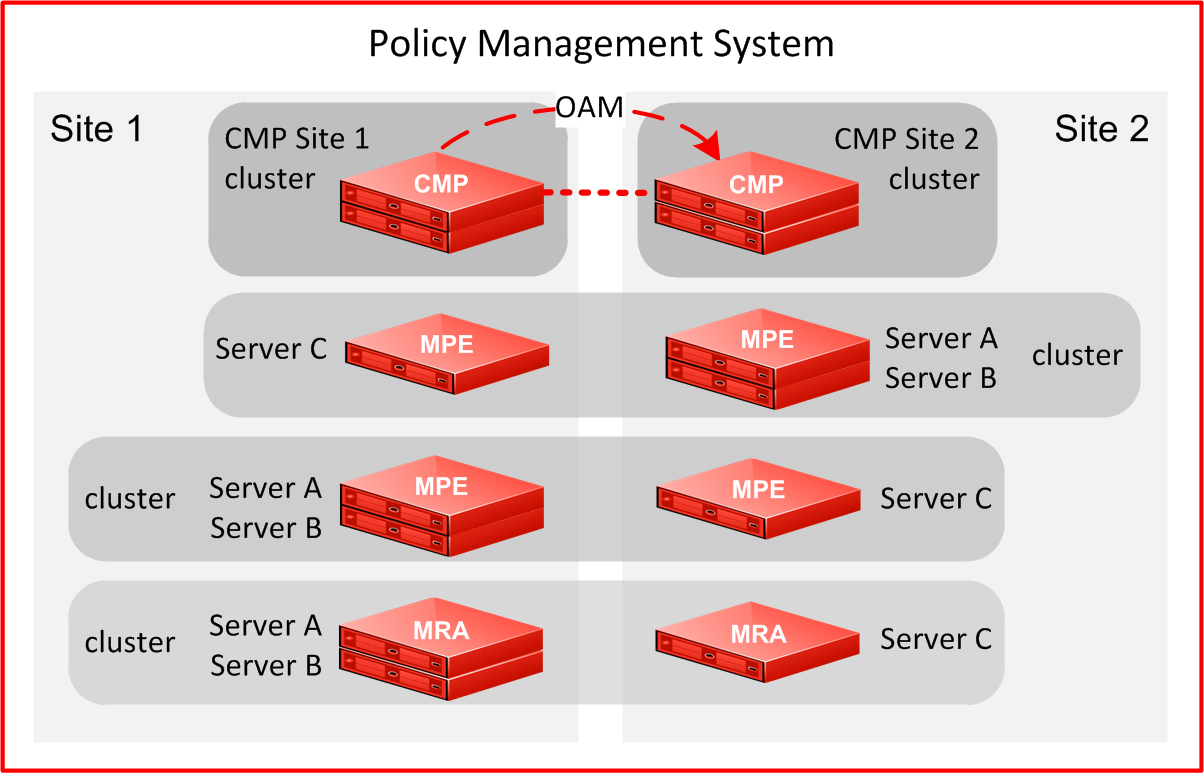In the Policy Management topology architecture, primary refers to the preferred option for sites, servers, and connections. Under normal conditions, for any cluster, a server at the primary site is the active server that services traffic or manages the Policy Management network. All clients and gateways are connected to this primary site.
MPE and MRA clusters can be dispersed between a primary site and a secondary site. Secondary refers to the georedundant backup site, server, and connection. This dispersal mates the primary and secondary sites together. (In contrast, CMP clusters are paired, not geographically dispersed.) In normal, non-failure conditions, all traffic and active sessions are handled by the active MPE device at the primary site. The standby and spare MPE devices do not receive any live traffic load, but both hold an up-to-date copy of the active session state data at all times (replicated using High Availability).
If for some reason the active server at a primary site can no longer provide service, the cluster fails over to the standby server at the primary site. The server assuming the service becomes the active server.
If and only if no servers are available at an MPE or MRA primary site, the cluster fails over to the secondary site, and a spare server takes over as the active server in the cluster and provides service. When one of the servers at the primary site is able to provide service, then the active status reverts back to the server at the primary site. (In contrast, CMP failover is manual.)
You configure primary and secondary sites as initial states. After MPE and MRA clusters are in operation, failover from a primary site to a secondary site, if necessary, is automatic. (In contrast, CMP failover is manual.)
The spare MPE device at the secondary site does not share the VIP address that is shared between the active and standby MPE devices at the primary site. This means that active MRA devices must support a secondary IP address for each MPE cluster in a georedundant topology. If both the active and standby MPE devices at the primary site become unavailable, and the spare MPE device is promoted to active status, it assumes the Diameter Identity (host name and realm name) of the MPE cluster, and requires active MRA devices to establish Diameter connections using the secondary IP connection to continue sessions.
It is not meaningful to describe a site as primary except in the context of where the active server of a cluster is located. For example, as shown in Figure 1, you could establish a topology with two sites and two MPE clusters, with the spare server of each cluster located at the other site. In this topology, the primary site of Cluster 1 is also the secondary site of Cluster 2, and vice versa.
